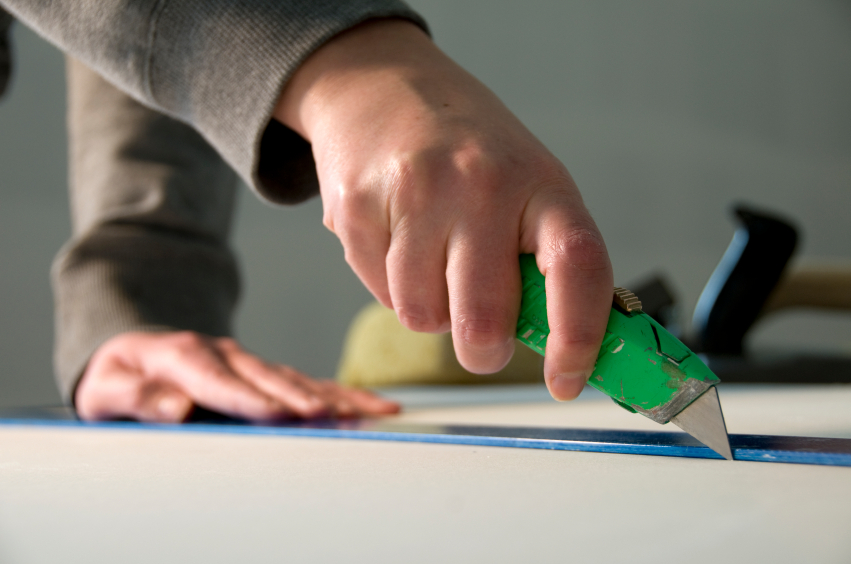How To Repair Drywall Holes So They REALLY Don’t Show
There’s nothing quite so unsightly – and embarrassing – as a gaping hole marring the otherwise-perfect walls of your home. Drywall damage is unattractive and obvious; it just sticks out like a sore thumb, like a giant flashing neon sign that screams “I AM UGLY RIGHT HERE!” Before you contact a drywall contractor near you, learn everything you need to know about drywall repair.

Luckily, it’s not so hard to remedy a medium-to-large drywall hole. As long as you follow a few key steps, it’s actually on the easier side of DIY home repair projects. What follows below is an easy step-by-step guide to guarantee you a smooth, seamless fix with no sign that there was ever any damage in the first place.
Before you begin working, gather your supplies. You’ll need: a square measuring tape, pencil, utility knife or drywall knife, scrap wood strip (1- or 2-inch wide), drywall screws, drill, drywall joint tape, small putty knife (around 3-inch), large putty knife (around 14-inche), joint compound, and a sanding block or fine-grit sand paper.
To repair a drywall hole:
1) First, look inside the hole to make sure that there are no electrical wires or plumbing in the way. Once you’ve confirmed that it’s all clear, cut out a square around the existing hole. Use the measuring tape and pencil to mark out a true square, then use the utility knife to make the cutout.
2) Next, cut a matching square out of new drywall. You want it to be the same size as the square hole you just made. Make sure the new drywall is the same thickness as the old drywall.
3) Now make a “backer,” which will anchor the new drywall. Cut the piece of scrap wood so that it’s a few inches longer (on each side) than the height of the square hole. Slide the backer into the hole and use drywall screws to fasten it in place, so that it spans the back of the hole. Finally, put the new drywall square in place and use one screw to fasten it firmly to the backer.
4) And that’s your patch. It doesn’t have to be an absolutely perfect fit, because you’ll be covering the seams with drywall tape, and filling the gaps with joint compound.
5) Time to apply drywall tape all around the seams. Press firmly so that the tape adheres completely, as flat as possible. Then, using a small spreading knife, apply the joint compound. Fill in the crevices and smooth compound over the tape, blending it into the wall. Finish off with a few passes of the large spreading knife, to create a seamless finish.
6) Once the compound is completely dry, use a sanding block or fine-grit sandpaper to go over the patch. This will eliminate any final ridges or bumps.
Once you’re finished, all you’ll need to do is apply a fresh coat of paint. Your drywall patch will be strong and completely hidden, and no one should ever be able to tell that there was once a hole there.
Good luck! If you'd like a professional to take care of this drywall repair for you, find a handyman or a painter in your area.
Updated April 15, 2018.
Related Articles
Looking for a Pro? Call us (866) 441-6648



